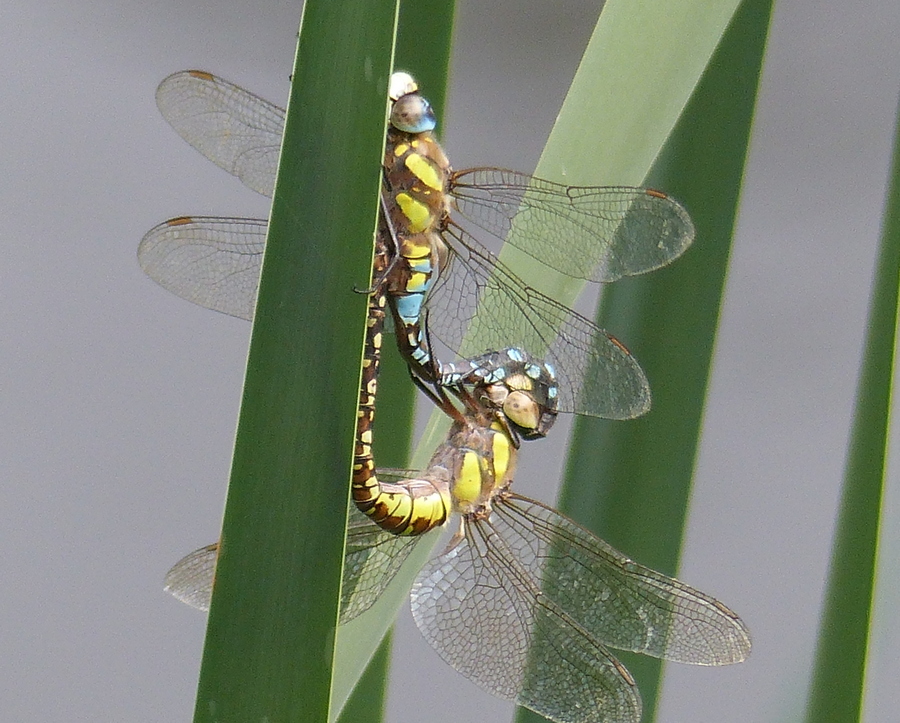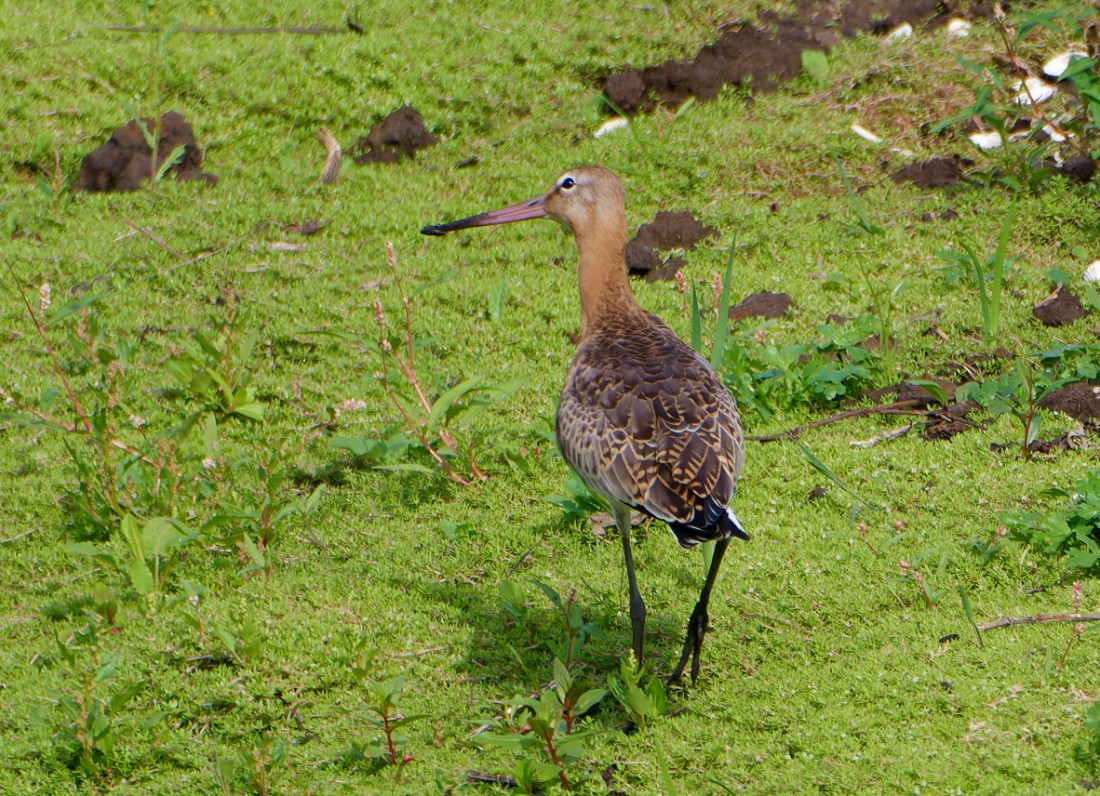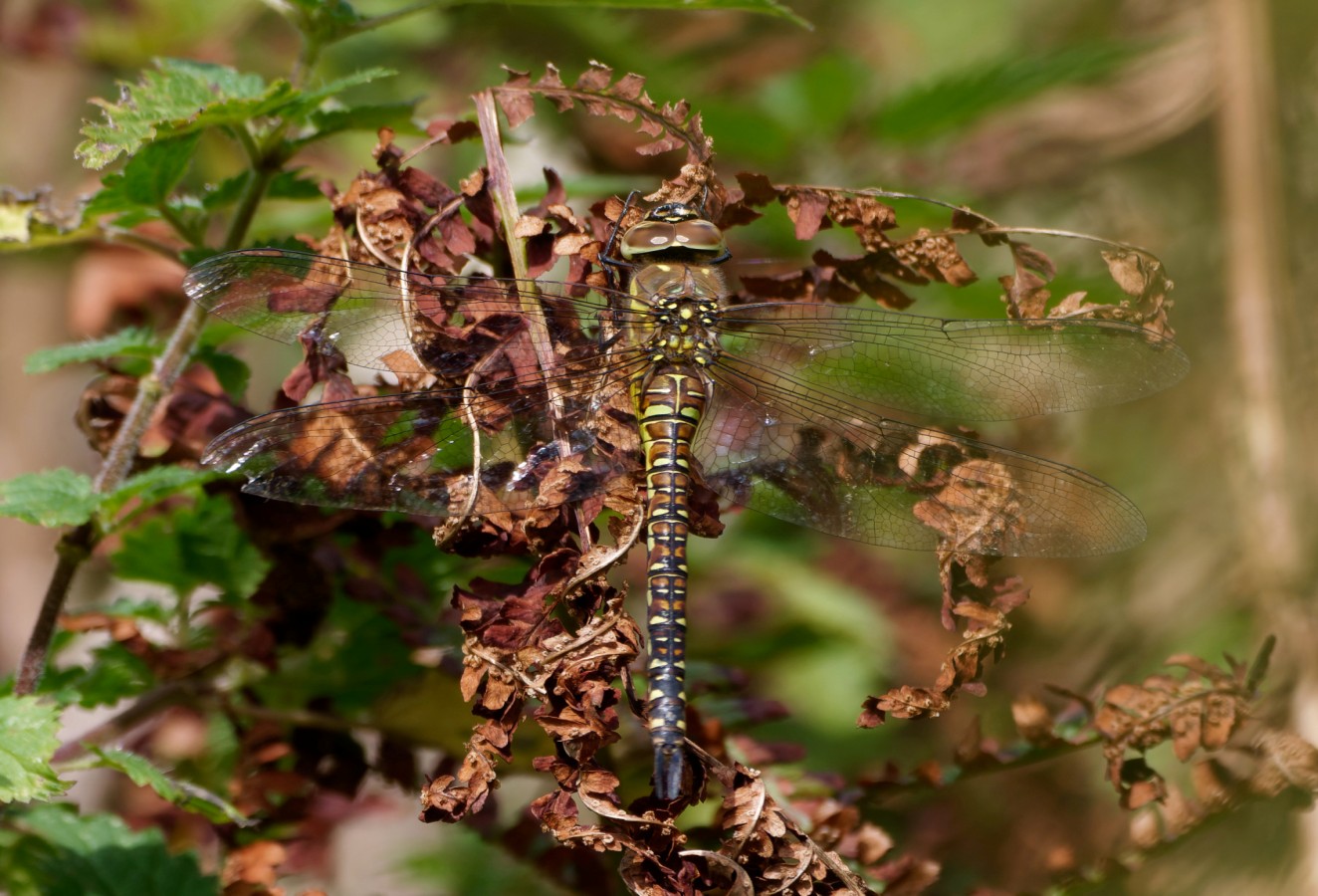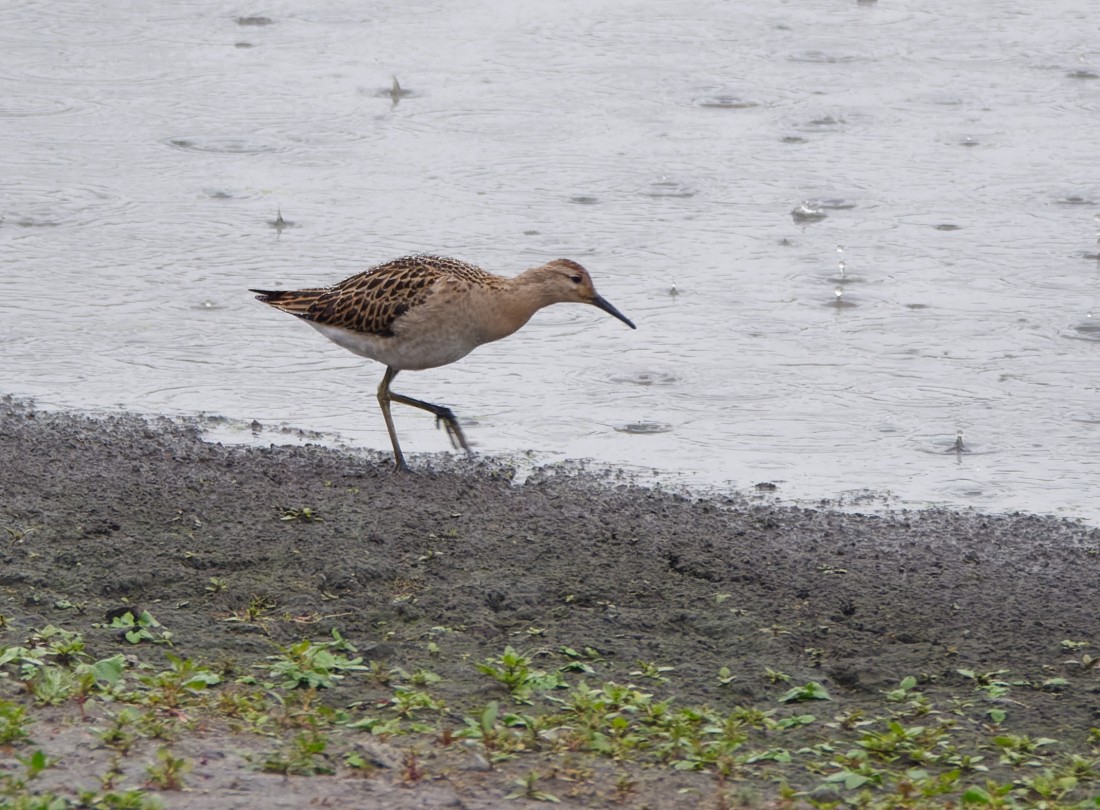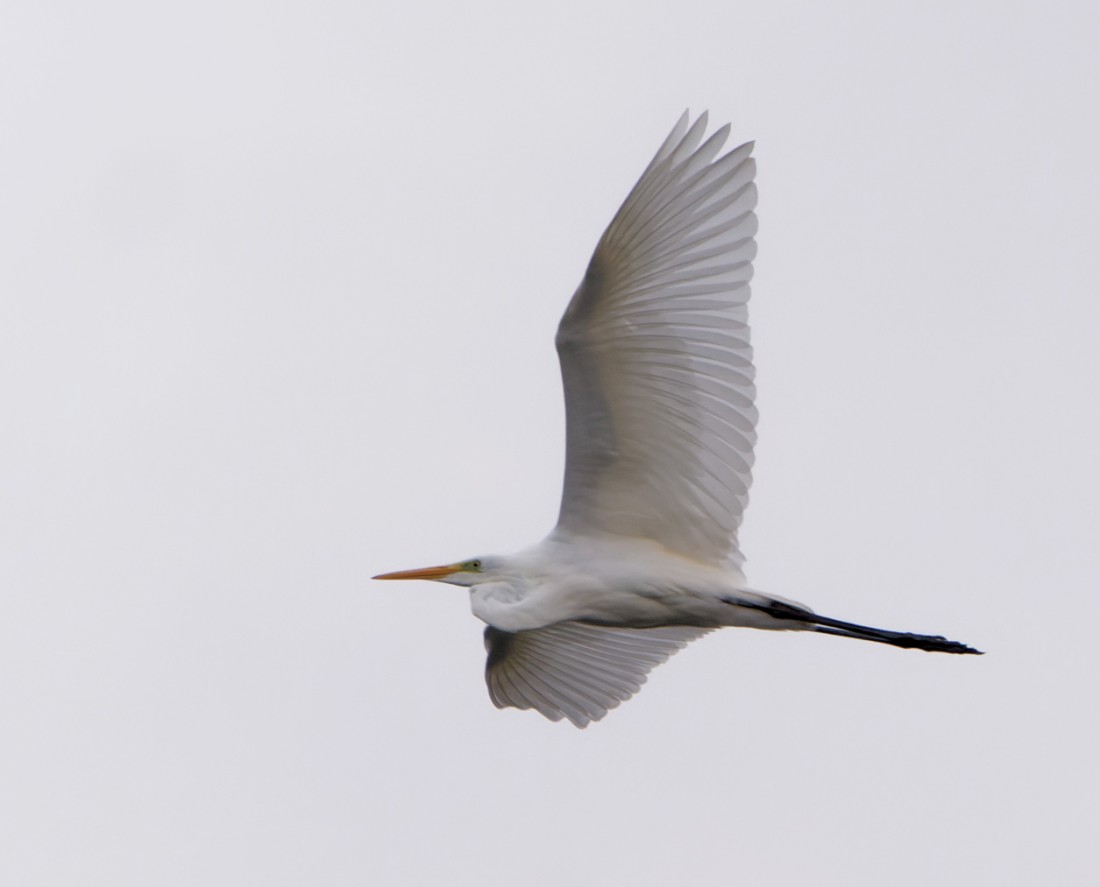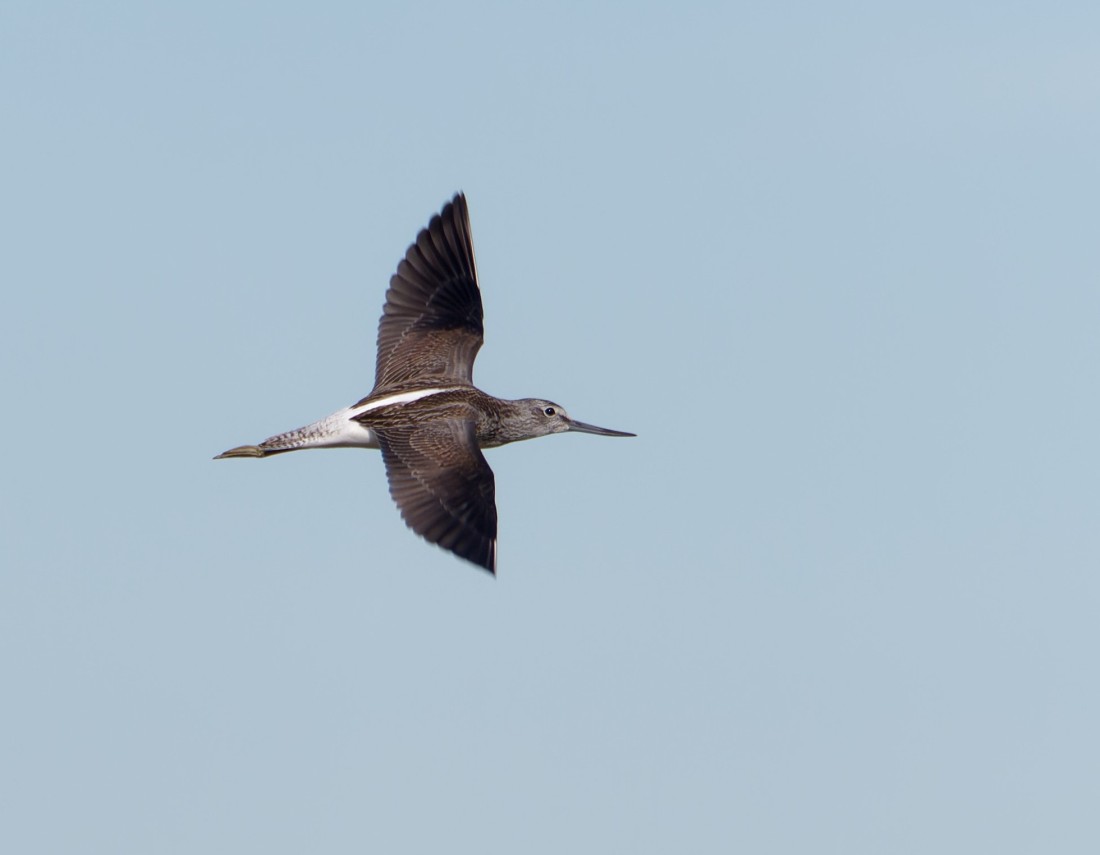Woolston Eyes Monthly Sightings
2022-09-28
Butterfly totals for 20-28th September including the river; 26 Red Admiral, 16 Speckled Wood, c.16 Small White, 8 Comma, c.8 Green-veined White, 1 Large White, 1 Clouded Yellow, 1 Painted Lady and 1 Small Copper. The Clouded Yellow was the first since 2014.
Submitted by: Dave Hackett
2022-09-15
Here’s a link to a minute or so of video, showing two Ruff which were in front of the Morgan Hide recently and a Peregrine which flew on to No.4 bed carrying a Black-tailed Godwit. https://youtu.be/VAYP3pMlW7I Cheers David
Submitted by: David Bowman
2022-09-14
In the early afternoon sunshine, a few Common Darters and several Migrant Hawkers were present along the south bank of No.3 Bed today,as well as the odd Butterfly.
Photo of a Comma Butterfly
Submitted by: Brian Baird
2022-09-13
After a brief check of No.4 bed, Dan Owen and I concentrated on scanning the skies for raptors from the Morgan Hide, as both Ospreys and Honey Buzzard had been reported earlier, moving south over Winter Hill. In the event, we were out of luck but ended up with a decent count of the commoner raptors, including: 3 Hobbies, 1 Marsh Harrier, 1 Peregrine, 4 Sparrowhawks, 1 Kestrel and 21 Common Buzzards. Other migrants noted were: 89 Swallows, 65 House Martins, 39 Sand Martins and 32 Meadow Pipits. As the recent rains have raised the water levels, particularly on No.3 bed, wader numbers have reduced, though we did locate 2 Greenshanks, 1 Common Sandpiper, 4 Green Sandpipers, 5 Black-tailed Godwits and 4 Common Snipe. Photo of a Black-tailed Godwit Cheers David Bowman
Submitted by: David Bowman
2022-09-10
We started at dawn on No.4 bed and combined a session of counting visible migration with the completion of the monthly Wetland Birds Survey (WeBS) for the bed. A few waders arrived to feed or passed over, including 1 Dunlin, 1 Common Sandpiper, 1 Little Ringed Plover, 3 Green Sandpipers and 11 Black-tailed Godwits. Visible passage of smaller birds included 82 Swallows, 12 Sand Martins, 31 House Martins and 18 Meadow Pipits. As the morning warmed and activity slowed down, we were brought back to attention when a Peregrine flew in carrying large prey and pitched onto the mud in front of the viewing platform. It started plucking its prey but then noticed us and took flight, being joined by a second Peregrine. Keen to see what the prey was (a Black-tailed Godwit), we made our way out onto the mud, flushing a previously unnoticed small wader on the way. We relocated it and got very close views of a Little Stint as it flew by, calling as it went. Little Stints were once regular, back in the 1980’s but this was our first since 1998, another benefit brought by the new wetland. The day wasn’t yet done, though, as we then encountered a large, black shrew on the canal track as we were heading back to No.3 bed, which I suspected might be a Water Shrew, a very scarce sighting for the Reserve. It was trotting confidently down the track and showed no fear, as it climbed onto my boot, where it paused before ambling off into the undergrowth. (see photo of the possible Water Shrew) Cheers David Bowman (with Dan Owen, Helen Wynn and Dave Steel)
Submitted by: David Bowman
2022-09-08
With a light easterly breeze and largely clear skies, it looked good for making visible migration counts this morning. We split our time between the platform over-looking the No.4 bed wetland and the Morgan Hide in No.3 bed, ending up with a creditable 74 species. Passage counts included: 1 Tree Pipit, 1 Yellow Wagtail, 1 Goosander, 3 Little Egrets, 10 Grey Wagtails, 35 Meadow Pipits, 450 Swallows, 155 House Martins and 7 Sand Martins. Most warblers have already departed, apart from Chiffchaffs and Blackcaps which are still plentiful, so the Reed Warbler, Willow Warbler and 4 Whitethroats may be our last for the year. Hobbies were active all morning, with a presumed family party of an adult and 2 juveniles targeting the hundreds of Goldfinches on No.4 bed and another hunting over No.3 bed. We also took the time to count the waders and waterbirds across the two beds, ending up with: 1 Common Sandpiper, 3 Ringed Plovers, 1 Little Ringed Plover, 6 Green Sandpipers, 27 Black-tailed Godwits, 8 Snipe, 25 Lapwings, 6 Grey Herons, 1 Cormorant, 2 Garganey, 2 Kingfishers, 2 Water Rails, 19 Mute Swans, 26 Canada Geese, 149 Greylag Geese, 26 Little Grebes, 58 Coot, 12 Moorhens, 10 Wigeon, 6 Tufted Ducks, 245 Teal, 151 Shoveler, 26 Mallard and 91 Gadwall. Photo of a Migrant Hawker Cheers David Bowman (with Dan Owen)
Submitted by: David Bowman
2022-09-06
There were some welcome autumn showers, both overnight and during the morning, which served to refresh our flagging wetlands and bring down some southbound waders. At dawn on No.4 bed, 3 Ringed Plovers, 1 Little Ringed Plover, 2 Green Sandpipers and 4 Snipe were all feeding well on the new wetland. The 3 long-staying juvenile Garganey were still looking settled and a Hobby put in an appearance, stooping through a flock of 140 Goldfinches but somehow failing to catch. Then it was over to No,3 bed, where 2 Ruff were in front of the Morgan Hide, with 2 Green Sandpipers, 24 Black-tailed Godwits and 4 Snipe further out on the increasingly exposed mud, while a Hobby flew through twice. From July onwards we lower the water levels on all our wetlands, which has a number of beneficial effects. These include: strengthening reed growth, increasing aquatic invertebrate levels and providing suitable habitat for passage waders. The decreased water depth also suits dabbling ducks and we counted: 186 Shoveler, 220 Teal and 250 Gadwall (not to mention 145 Greylag Geese!). Visible passage was limited to hirundines, which included: 135 Swallows, 26 Sand Martins and 46 House Martins. Record shot of one of the Ruff Cheers David Bowman (with Dan Owen)
Submitted by: David Bowman
2022-09-04
Corrected figures for Small and Green-veined Whites; Small should be133 and Green-veined 38. Apologies for any confusion.
Submitted by: Dave Hackett
2022-09-04
Reserve-wide butterfly totals for the past week including the river; 106 Speckled Wood, c.105 Small White, c.66 Green-veined White, 25 Common Blue, 13 Red Admiral, 8 Comma, 5 Large White, 4 Painted Lady, 3 Meadow Brown, 2 Small Copper, 1 Peacock, 1 Gatekeeper, and 1 Small Tortoiseshell.
Submitted by: Dave Hackett
2022-09-03
There was a nice flurry of activity this morning, starting with a Hobby perched in a tree near the Footbridge into No.3 bed at dawn. Then a Great White Egret flew past the Morgan Hide, carrying on to the west and passing over No.4 bed before veering off to the north. With the lower water levels now exposing a good amount of mud on the bed, there were plenty of feeding waders, with counts of: 3 Green Sandpipers, 20 Black-tailed Godwits and 10 Snipe. No.4 bed was even more productive, with highlights of: 3 Garganey, 1 Little Egret, 6 Pintail, 1 Dunlin, 1 Greenshank, 1 Little Ringed Plover, 5 Green Sandpipers, 11 Snipe, 5 Yellow Wagtails, 1 Marsh Harrier and 70 Swallows, Photo of the Great White Egret Cheers David Bowman (with Dan Owen, Helen Wynn and Brian Baird)
Submitted by: David Bowman
2022-09-01
With autumn now upon us, another morning of blustery easterlies brought a few more waders. Counts included: 2 Greenshanks, 1 Little Ringed Plover, 6 Green Sandpipers, 30 Black-tailed Godwits and 8 Snipe. Three of the long-staying juvenile female Garganeys were still on the No.4 bed wetland, where a trickle of passage brought in a Yellow Wagtail, a handful of Meadow Pipits. 30 Swallows and 40 House Martins. No Swifts today, though and we may have seen the last of them for another year. It promises to be a good autumn for passage Blackcaps, as the large stands of Elders around the Reserve are heavy with ripening berries. September is usually the peak month for the arrival of Blackcaps from further north, which stop over to fatten up before heading south to the Mediterranean basin for the winter. Already this week our ringing teams have caught 115, which bodes well for the coming weeks. Photo of a Greenshank Cheers David Bowman
Submitted by: David Bowman

